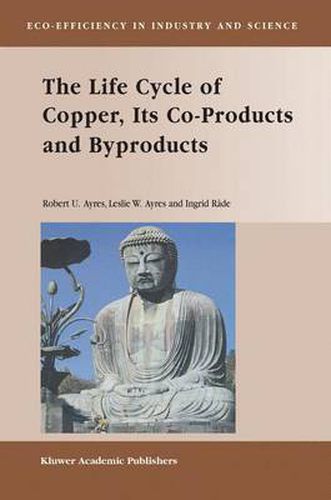Readings Newsletter
Become a Readings Member to make your shopping experience even easier.
Sign in or sign up for free!
You’re not far away from qualifying for FREE standard shipping within Australia
You’ve qualified for FREE standard shipping within Australia
The cart is loading…






This title is printed to order. This book may have been self-published. If so, we cannot guarantee the quality of the content. In the main most books will have gone through the editing process however some may not. We therefore suggest that you be aware of this before ordering this book. If in doubt check either the author or publisher’s details as we are unable to accept any returns unless they are faulty. Please contact us if you have any questions.
Copper is one of the three most important metals in the world economy, and the only one of the three that is comparatively scarce in the earth’s crust. Known reserves in the early-21st century will only last a few decades at projected rates of consumption. While some substitution possibilities exist for some of its applications, copper is uniquely valuable as a conductor of electricity in a world that is rapidly electrifying. This fact makes the copper life cycle an appropriate subject for holistic analysis. This work, which includes a quantitative demand forecasting model, is based on a study commissioned by the International Institute for Environment and Development (IIED) for the World Business Council for Sustainable Development (WBCSD) fills that need. Among the conclusions of the study are the following. The medium-term prospects for copper producers and copper consuming industries include (1) more intensive exploration into more remote regions, (2) utilization of lower grade ores resulting in more mine wastes and associated waste disposal problems, (3) more intensive mining efficient ore reduction processes, (4) dramatic price increases when the current glut works itself out, (5) significant changes in the patterns of consumption (increasingly electrical applications), (6) sharp increases in the need for recovering and recycling old scrap copper in the future, (7) a significant buildup of copper and by-products (especially arsenic) either in use or in the human environment. Similar implications can be drawn for two other scarce and toxic metals - lead and zinc - often found in geological association with copper.
$9.00 standard shipping within Australia
FREE standard shipping within Australia for orders over $100.00
Express & International shipping calculated at checkout
This title is printed to order. This book may have been self-published. If so, we cannot guarantee the quality of the content. In the main most books will have gone through the editing process however some may not. We therefore suggest that you be aware of this before ordering this book. If in doubt check either the author or publisher’s details as we are unable to accept any returns unless they are faulty. Please contact us if you have any questions.
Copper is one of the three most important metals in the world economy, and the only one of the three that is comparatively scarce in the earth’s crust. Known reserves in the early-21st century will only last a few decades at projected rates of consumption. While some substitution possibilities exist for some of its applications, copper is uniquely valuable as a conductor of electricity in a world that is rapidly electrifying. This fact makes the copper life cycle an appropriate subject for holistic analysis. This work, which includes a quantitative demand forecasting model, is based on a study commissioned by the International Institute for Environment and Development (IIED) for the World Business Council for Sustainable Development (WBCSD) fills that need. Among the conclusions of the study are the following. The medium-term prospects for copper producers and copper consuming industries include (1) more intensive exploration into more remote regions, (2) utilization of lower grade ores resulting in more mine wastes and associated waste disposal problems, (3) more intensive mining efficient ore reduction processes, (4) dramatic price increases when the current glut works itself out, (5) significant changes in the patterns of consumption (increasingly electrical applications), (6) sharp increases in the need for recovering and recycling old scrap copper in the future, (7) a significant buildup of copper and by-products (especially arsenic) either in use or in the human environment. Similar implications can be drawn for two other scarce and toxic metals - lead and zinc - often found in geological association with copper.